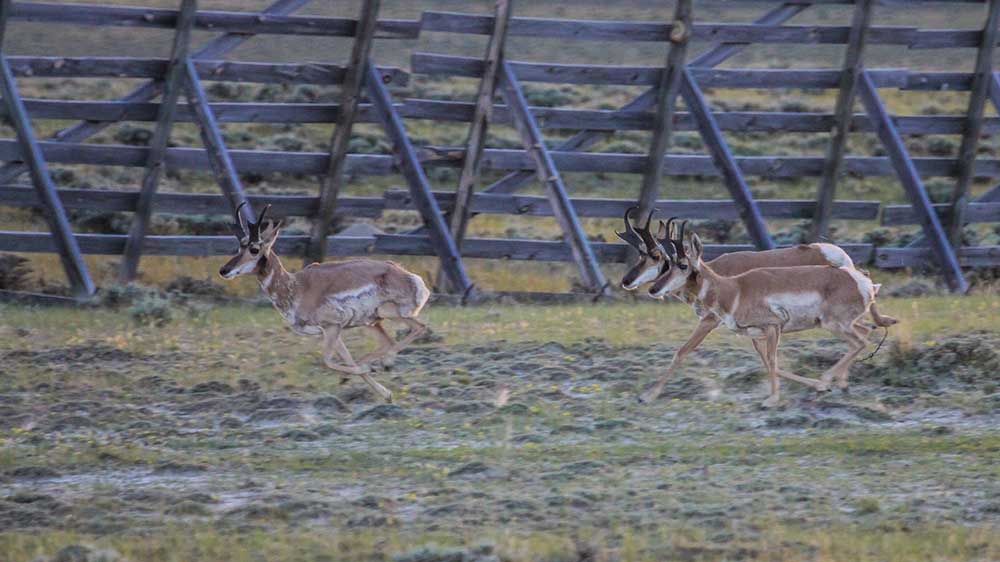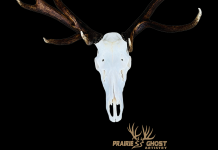Antilocapra Americana
Translation = American Antelope Goat
While the Pronghorn is neither an antelope, nor a goat, it is truly all-American. Pronghorn are the only surviving members of their ancient species, which has been traced back over 20 million years. During these prehistoric times, predators such as the American Cheetah (Miracinonyx inexpectatus) would have preyed on Pronghorn as a food source. These American cheetahs show similar traits found in modern day cheetahs and are considered one of the main reasons Pronghorn evolved into such a fast hoofed mammal. Luckily for the Pronghorn, the American Cheetah became extinct around 12,000 years ago, making the Pronghorn the fastest land animal in the Western Hemisphere.
Just how fast?
- Quick bursts of up to 60 mph make them the 2nd fastest land animal in the world.
- They also have the ability to maintain a steady pace of around 30-40 mph for several miles (which is top speed for many deer-type mammals).
Built for speed:
- Pronghorn can reach and maintain high levels of speed due to their large heart, tracheae, and lungs – making air intake much quicker for their relative size.
- A smaller digestive track cuts down on weight.
- A special type of hollow hair helps reduce weight and disperse heat, but also helps block cold air and wind in winter.
- Hooves are larger on the front legs which support most of the weight while running giving them added stability at high speeds.
- Glands above the hooves secrete a type of conditioner to keep their hooves in prime condition.
- When spooked they raise the white hair on their rumps to signal danger, which other pronghorn see and recognize from miles away. They also produce a musk that helps warn others that might be resting or feeding in the area to become alert.
Other incredible facts:
- Despite their amazing anatomy, Pronghorn have a hard time jumping obstacles such as fences and will usually go under them.
- Female Pronghorn can also sport small horns, but only males have black markings on their face and neck.
- Pronghorn are almost always within four miles of water.
- A 300-degree field of vision helps them see miles of possible movement.
- They can survive in temperatures ranging from -50 to 130 degrees Fahrenheit.
Hunters Note:
Pronghorn are by far one of the most underrated big game animals in North America. For those who want to belly crawl through the sagebrush or test their limits on long-range shooting, Pronghorn hunting provides a unique opportunity that many hunters never consider. Plus, a good Pronghorn breakfast sausage is hard to beat.
















